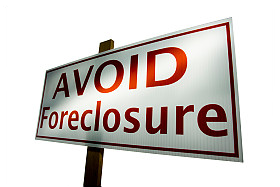
Mortgage foreclosure is a legal process by which a mortgage holder (mortgagee) regains possession of your home after a default. The most common type of default is the borrower failing to make mortgage payments. However, your mortgage default may include other things, as for example, failure to pay property taxes or maintain insurance.
Receiving Notification from Lender
If you default on your mortgage, the mortgagee or lender will notify you by mail. It is important to read all correspondence from your lender to make sure you don’t miss any legal notices. You cannot avoid foreclosure by claiming you did not read a legal notice. If you do not cure the default, the mortgagee will foreclose by complying with the legal requirements for foreclosure in your jurisdiction. At a minimum, you will get some additional notices in the mail. After the mortgagee takes the necessary legal steps, an official will sell your property at an auction. The best first step in avoiding foreclosure is to read all the correspondence you get from your lender.
Borrowers who can’t make a scheduled payment should contact their lenders as soon possible. Lenders have loss mitigation departments that will try to work out payment arrangements with borrowers who are down on their luck.
Understanding Your Mortgage Documents
Another key to avoiding foreclosure is to understand what your mortgage requires in a default situation. The details of your obligation are spelled out in two documents: a promissory note and a mortgage (or deed of trust). The note documents the borrower’s agreement to borrow money and repay it according to a schedule. The mortgage creates a lien against the property and gives the mortgagee the right to foreclose if the borrower defaults. Both documents may offer the borrower options when the lender declares a default. Therefore, it is important to read your mortgage documents and understand their requirements.
Mortgages Insured by the Federal Housing Administration (FHA) or Veterans Association (VA)
Mortgages insured by the FHA or VA give borrowers the right to reinstate the mortgage after foreclosure proceedings have already started, by catching up on their delinquent payments, curing any other defaults, and paying the lender’s expenses. To reiterate, the key to avoiding foreclosure is reading the relevant documents and complying with their terms.
Getting Help
Beware of foreclosure prevention companies. They are mostly scams. They don’t have any special rights or abilities that benefit the borrower. Some charge high fees and do nothing at all or simply contact the lender and try to negotiate a modification. You can do that yourself. Others are after your property. They will convince you to sign the property over to them and rent it or repurchase it on a land contract. If you fail to pay, you’ve lost the property. As a tenant or land contract purchaser, you’ve got fewer rights to redeem or reinstate the deal.
There are some legitimate non-profit agencies that offer genuine help. For instance, some organizations will assist homeowners with a mortgage payment or two. Legal Aid offices usually have lists of these organizations. Government-insured mortgages, like those issued by the FHA, also offer borrowers certain loan modification options. The FHA certifies non-profit housing counselors with whom you can discuss your options. You can contact the FHA at (800) 569-4287 for a list of certified counselors.
You can also seek advice from an attorney who specializes in mortgage foreclosures.
Foreclosure Prevention Act of 2008
The Foreclosure Prevention Act of 2008 offers additional options for some homeowners who otherwise risk foreclosure. The Act creates a new mortgage program called “HOPE for Homeowners”, effective from October 1, 2008--September 30, 2015. The program offers FHA insured loans to homeowners who are currently unable to pay their mortgages. To participate, they must:
Live in the home;
Have acquired their mortgage before January 1, 2008;
Have mortgage payments plus taxes and insurance that amount to at least 31% of their income;
Have a current lender who is willing to give up the difference between the current mortgage balance and pay 3% of the loan balance to FHA;
Not have any other additional loans against the property and agree not to take any out for five years;
Agree to pay FHA a share of any equity or appreciation in the property if they sell it within five years; and
Agree to the new mortgage being a 30-year fixed mortgage.
Courtesy of: http://real-estate-law.freeadvice.com/real-estate-law/mortgage_matters/mortgage-foreclosure.htm